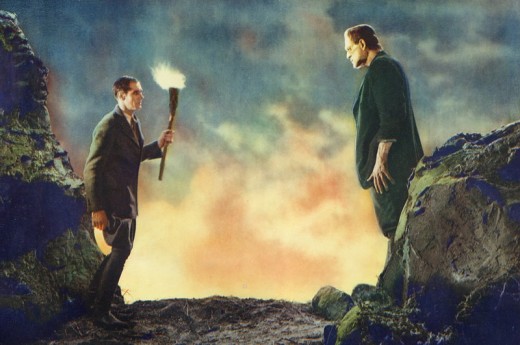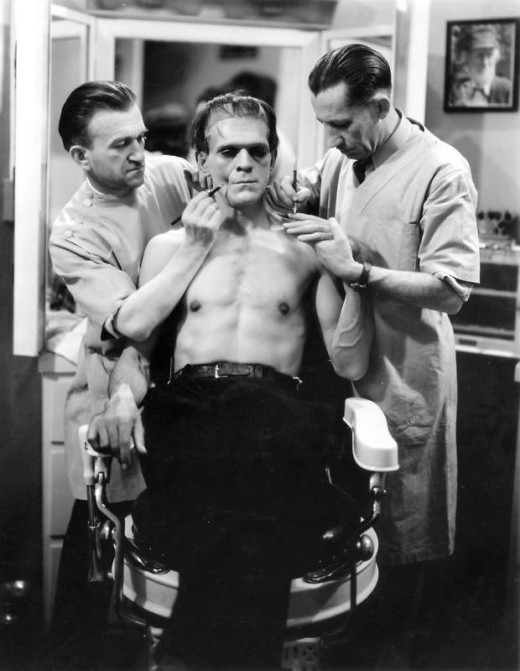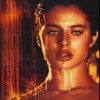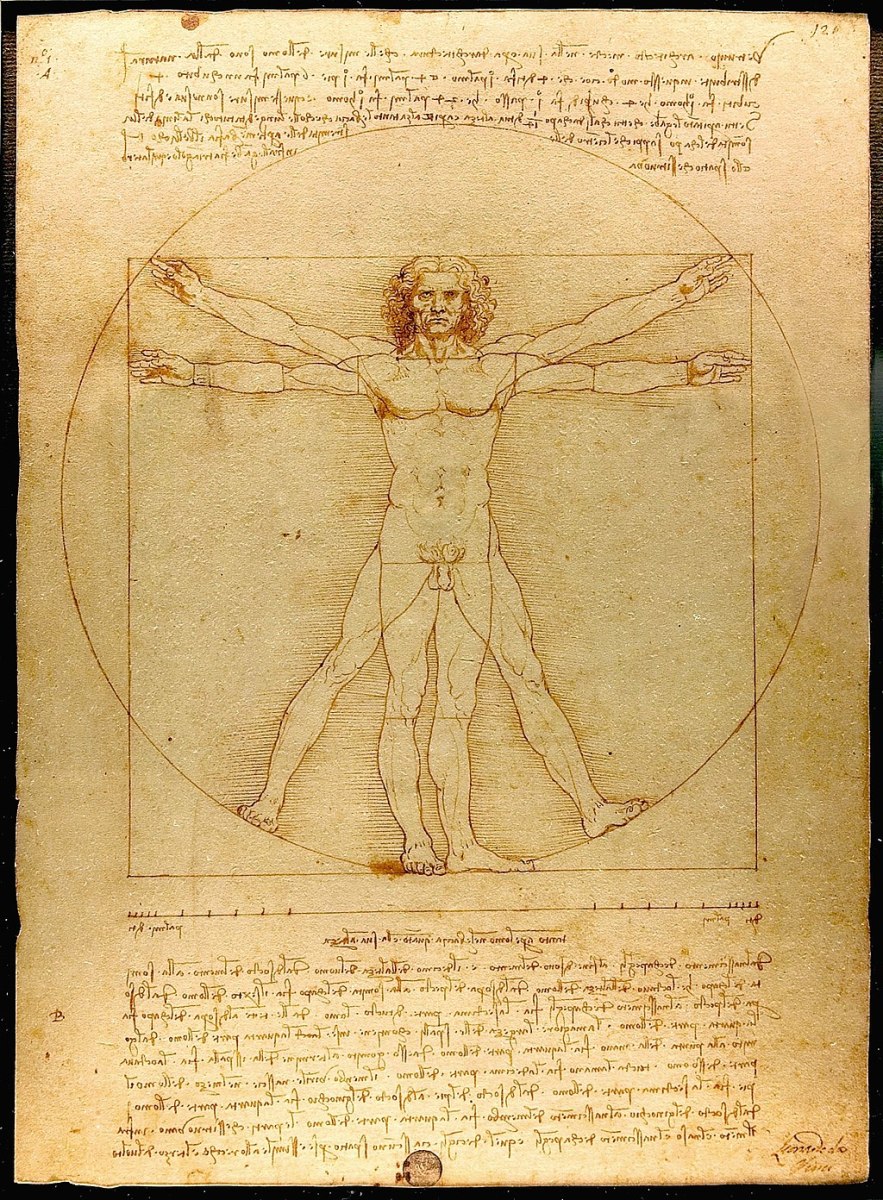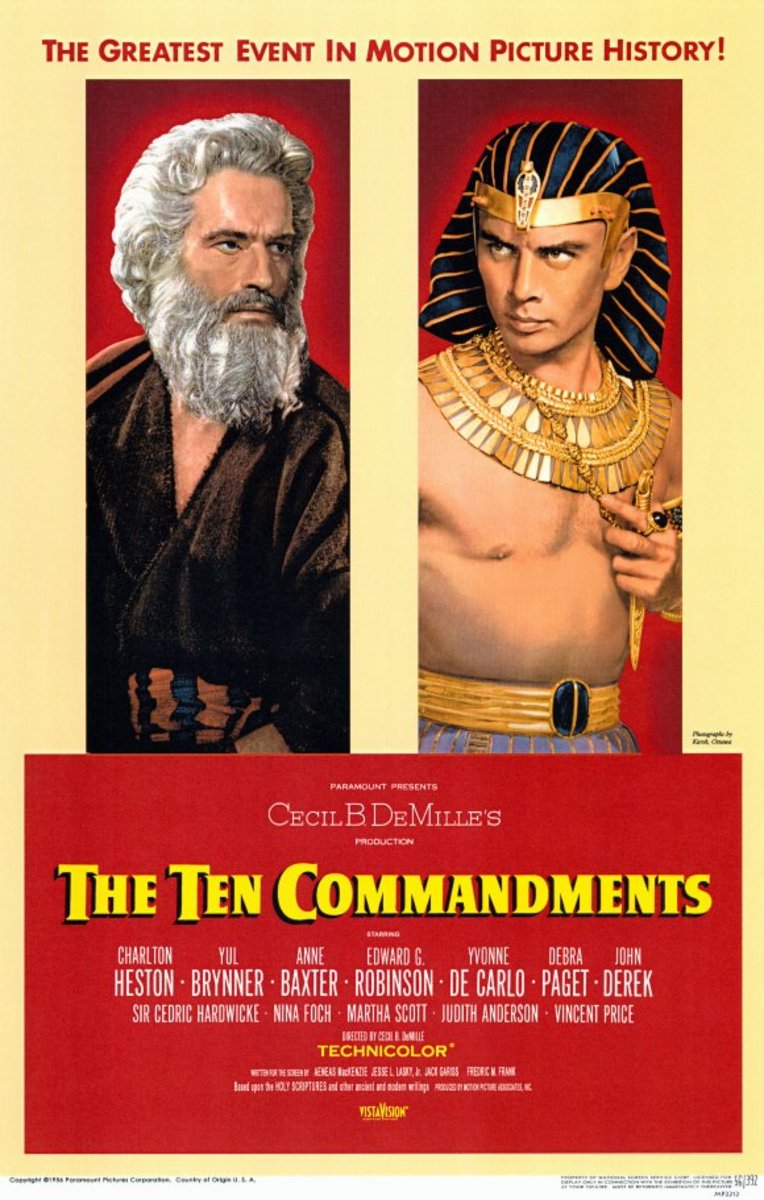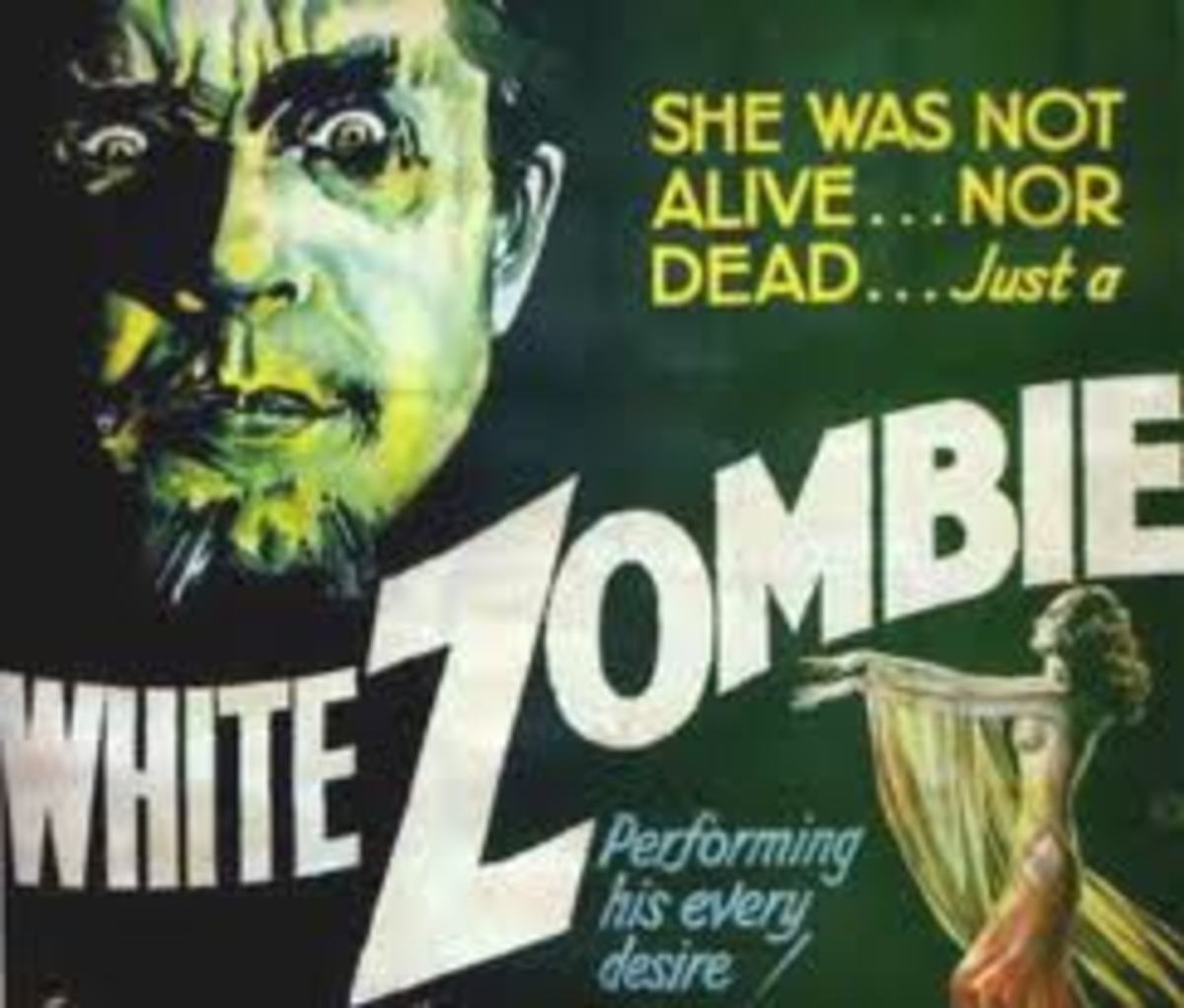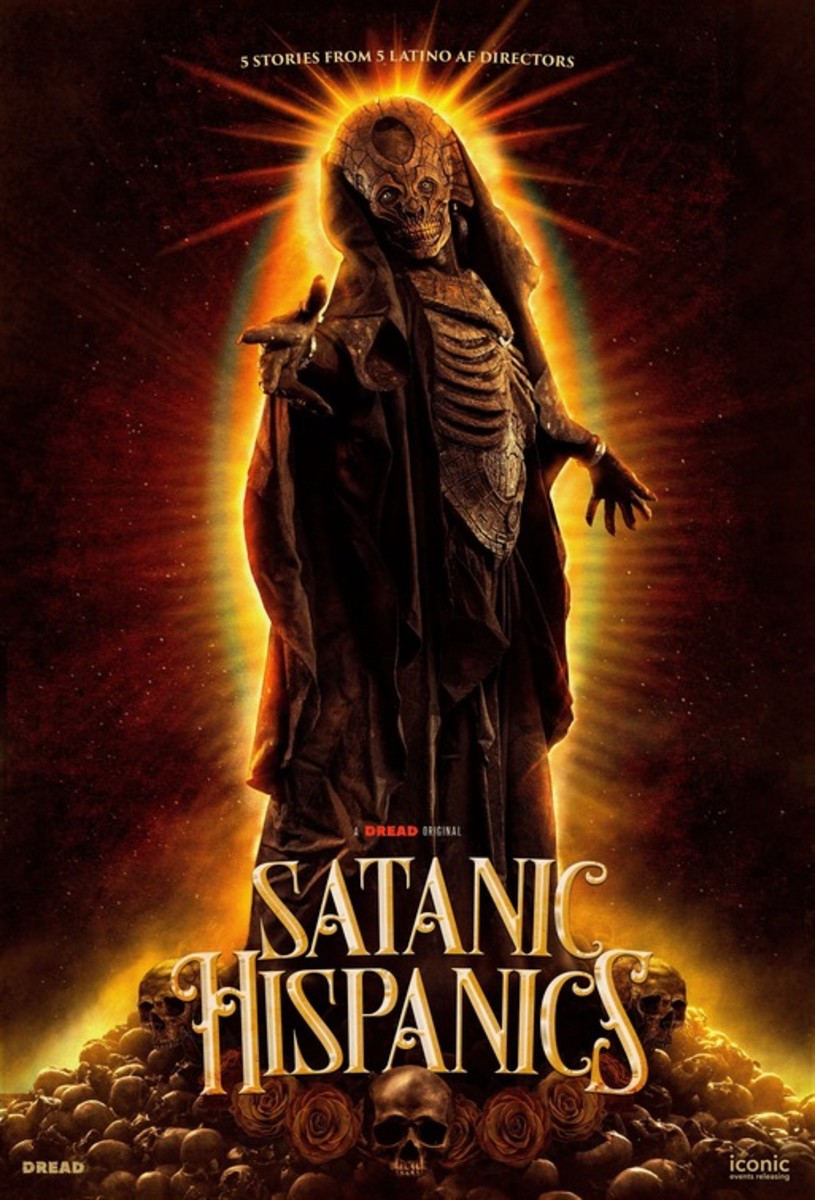Frankenstein (1931) - Illustrated Reference
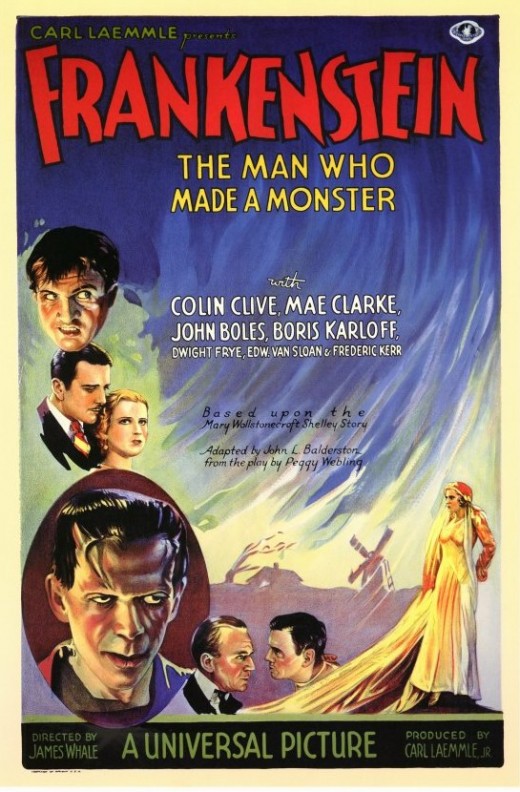
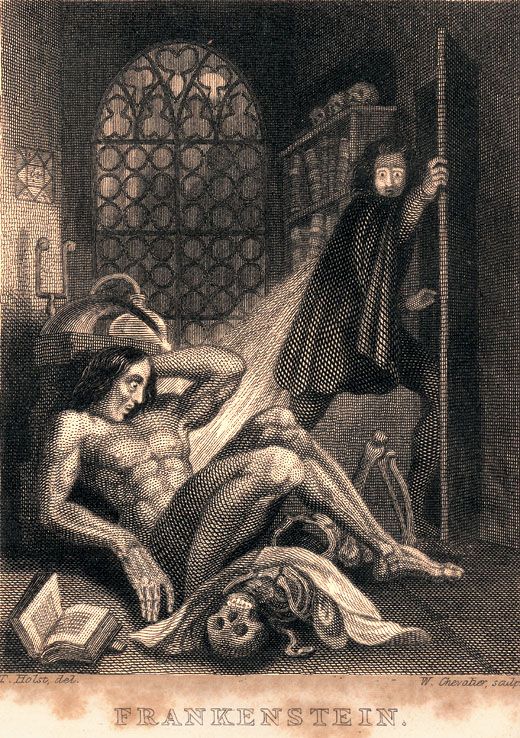
Frankenstein was directed by James Whale and premiered on the 21st November 1931. It starred Colin Clive, Mae Clarke, John Boles, Edward Van Sloan, Dwight Frye and Boris Karloff. Screenplay by Garrett Fort & Francis Edward Faragoh. Based on the novel by Mary Shelley. Music by Bernhard Kaun.
Dr. Henry Frankenstein has stitched together dead body parts and is planning to bring his humanoid creation to life. But he still needs to give it a brain.
Mary Shelley (1797-1851) was only 18 when she had a ‘waking dream’ and came up with the idea of Frankenstein, She had been holidaying in Geneva with Percy Shelley, Lord Byron and Dr. John Polidori and one stormy night they each decided to write a supernatural tale. At first Mary couldn’t think of a story but than one night...
"I placed my head on my pillow, I did not sleep, nor could I be said to think. My imagination unbidden, possessed and guided me.. I saw with shut eyes, but acute mental vision, - the pale student of unhallowed arts standing before the thing he had put together, I saw the hideous phantasm of a man stretched out, and then, on the working of some powerful engine, show signs of life and stir with an uneasy, half vital motion.”
From the preface to Frankenstein; or, the Modern Prometheus (published 1818).
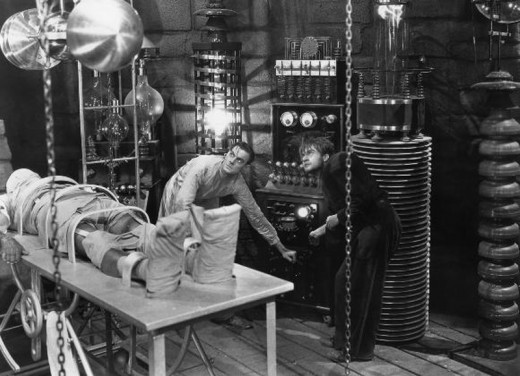
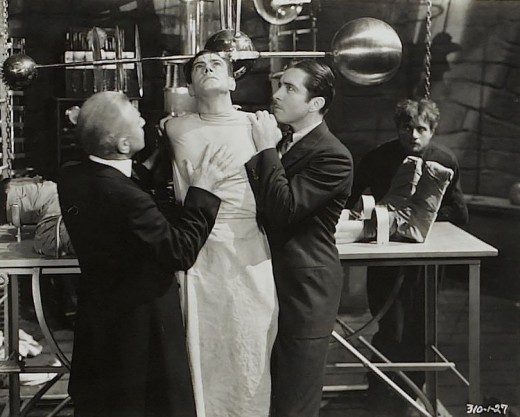
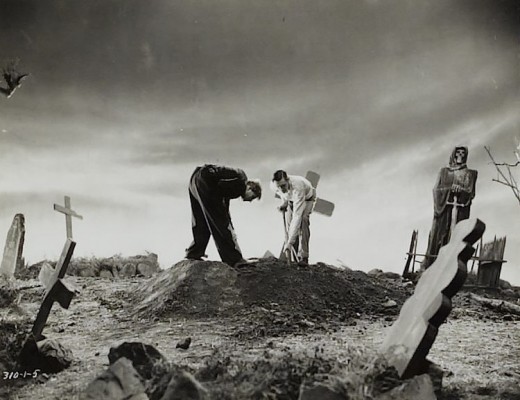
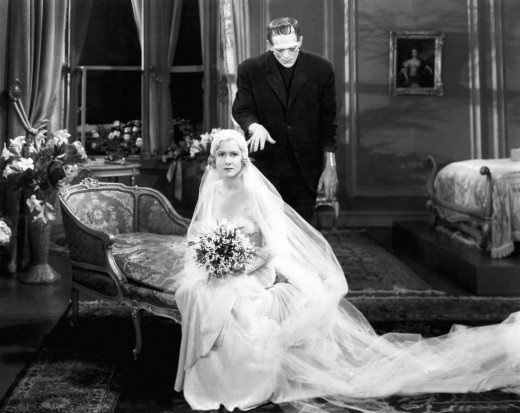
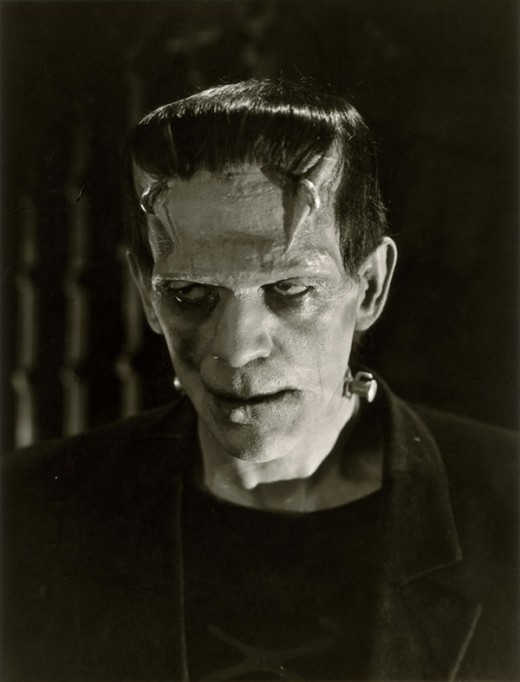
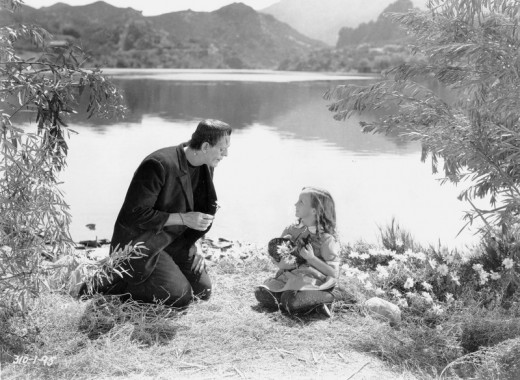
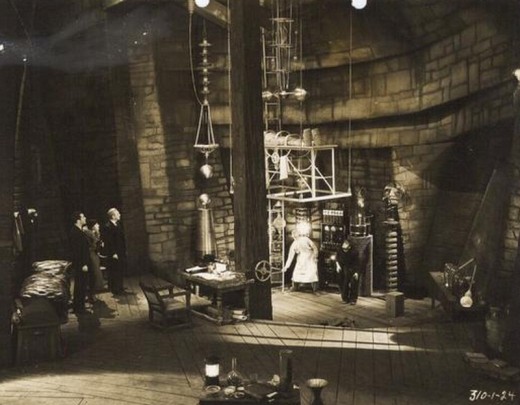
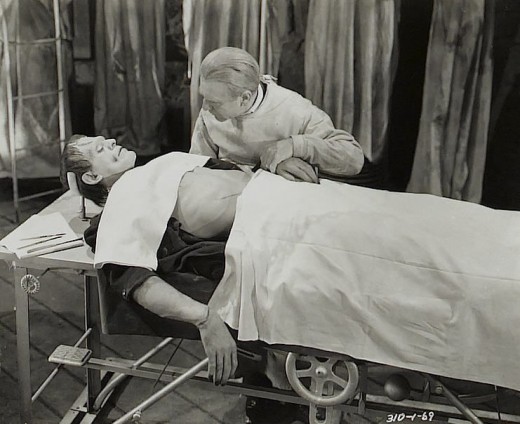
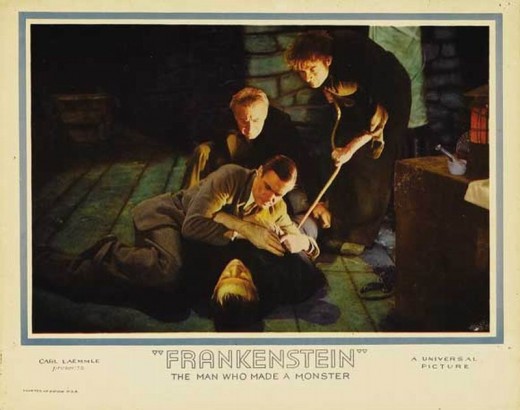
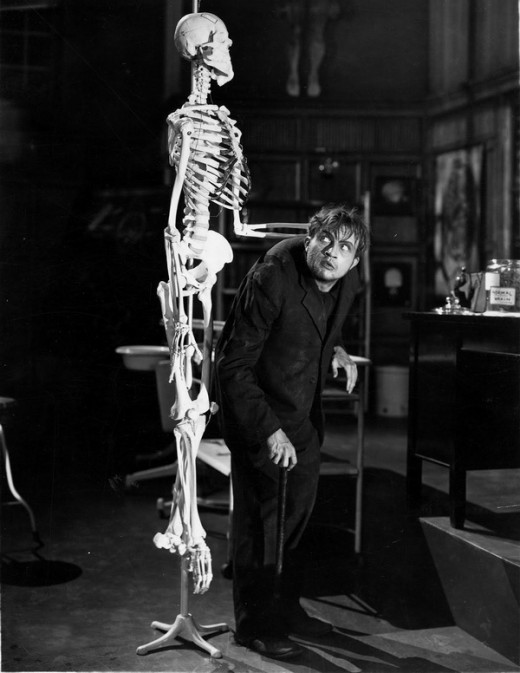
Henry Frankenstein: Look! It's moving... it's alive, it's alive, IT'S ALIVE!
Colin Clive (1900-1937) / Henry Frankenstein (Victor Frankenstein in the novel) a scientist obsessed with creating a living man from dead body parts. He succeeds but the creature has been given a criminal brain thanks to his incompetent assistant Fritz (Dwight Frye). Leslie Howard was also considered for the role.
Born in St. Malo, France, Colin Clive’s first movie was Journey’s End (1930 James Whale), he starred in Mad Love (1935 Karl Freund) along with Peter Lorre, and he played Dr. Frankenstein again in the sequel Bride of Frankenstein (1935 James Whale).
Mae Clarke (1910-1992) / Elizabeth, Henry’s fiancé, she’s very worried that Henry is spending too much time in his laboratory in the old abandoned watch tower, and doesn’t get out much (well except when he’s out grave robbing with Fritz).
Born in Philadelphia, Mae Clarke was probably best known as the girl who gets one half of a grapefruit squashed into her face by James Cagney in The Public Enemy (1931 William Wellman).
Dr. Waldman: And you really believe that you can bring life to the dead?
Henry Frankenstein: That body is not dead. It has never lived. I created it. I made it with my own hands from the bodies I took from graves, from the gallows, anywhere! Go and see for yourself.
Boris Karloff (1887-1969) / The Frankenstein Monster. A brilliant performance by Karloff, wearing Jack Pierce’s genius monster makeup, he makes the monster seem pathetic, confused, pitiful, with a childlike innocence.
Other actors have played the part including, Lon Chaney Jr, Bela Lugosi, Christopher Lee, Peter Boyle and Robert De Niro but none of them have come close to Karloff’s definitive portrayal.
Born in London, England, Karloff's real name was William Henry Pratt. James Whale had seen Karloff play a convict in The Criminal Code (1931 Howard Hawks) and thought he might be suitable as the monster in his new film.
The success of Frankenstein jump-started Karloff’s career in horror films. He would play the Frankenstein monster again in two sequels, Bride of Frankenstein (1935) and Son of Frankenstein (1939 Rowland V. Lee). Other classic roles which followed Frankenstein include The Mummy (1932), The Old Dark House (1932), The Mask of Fu Manchu (1932), The Black Cat (1934) and The Raven (1935).
One of Karloff’s last films was Targets (1968) directed by Peter Bogdanovich. Karloff plays an aging horror movie star, Byron Orlok, who confronts real horror in the shape of a murderous young sniper.
Edward Van Sloan (1882-1964) / Dr, Waldman, Henry’s old medical professor. He is against Henry’s experiments and warns him that the brain stolen from his laboratory was a criminal brain. Van Sloan appears before the opening credits warning the audience that the movie may shock and horrify.
Born in Minnesota, USA, Edward Van Sloan secured his place in movie history as the first actor to play Abraham Van Helsing on screen in Tod Browning’s Dracula (1931) starring Bela Lugosi as the Count. Van Sloan also appeared as Dr, Muller in the Karloff classic The Mummy (1932 Karl Freund).
Dwight Frye (1899-1943) / Fritz Frankenstein’s hunchbacked assistant. Fritz likes nothing better than to torture the monster by waving a flaming torch in its face, but the tormented creature finally kills him.
Born in Kansas, this was the second of two classic horror roles for Dwight Frye, the first was as the mad Renfield in Dracula (1931).
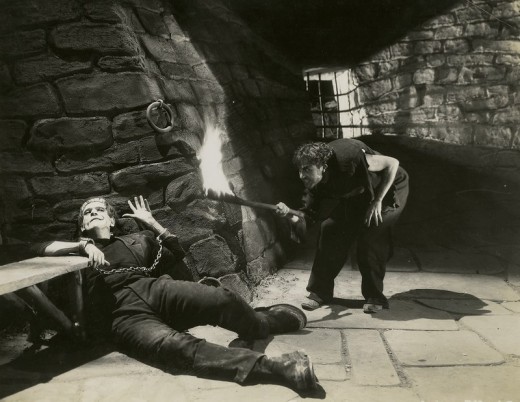
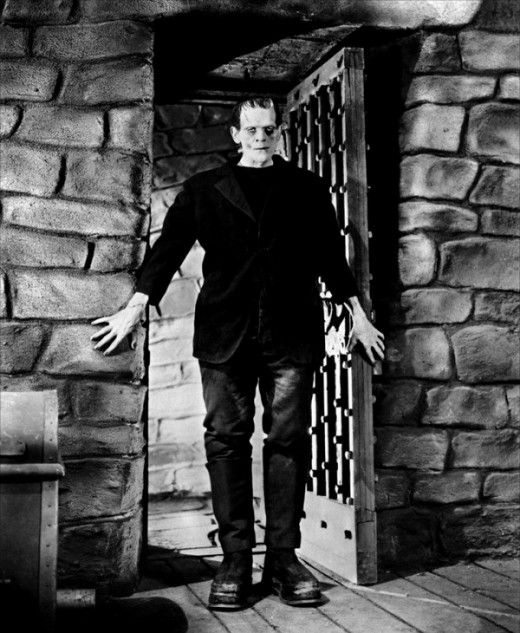
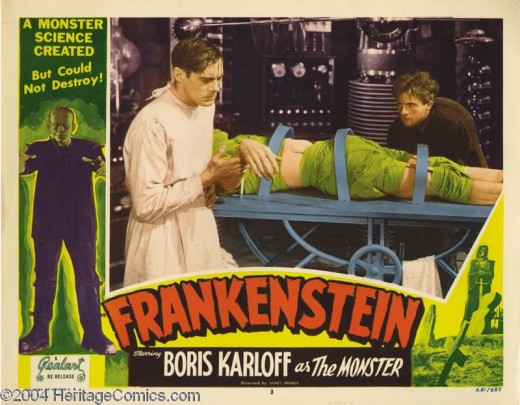
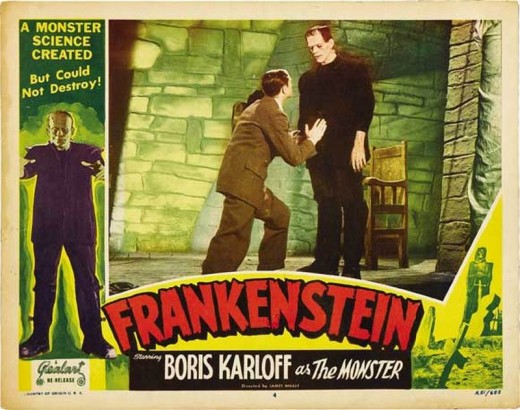
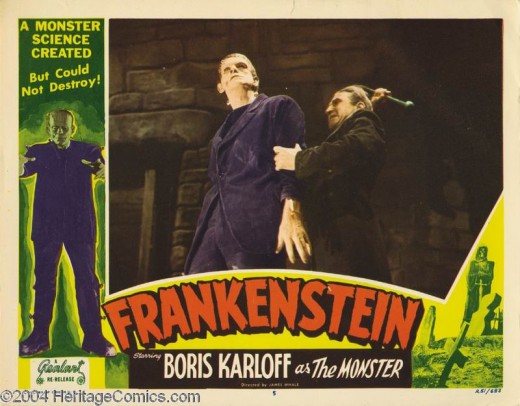
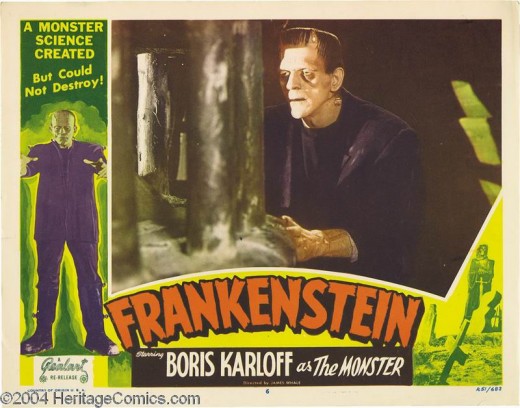
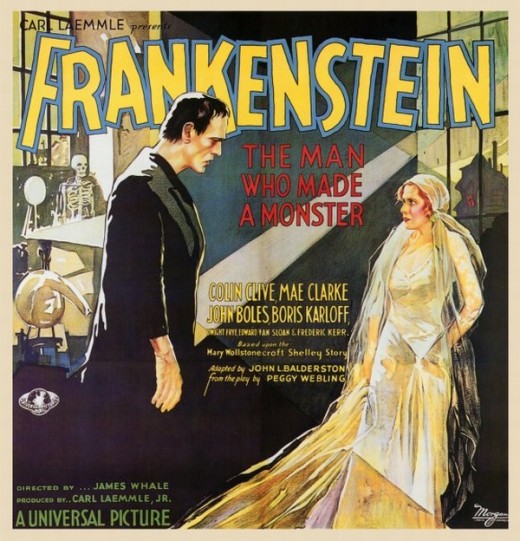
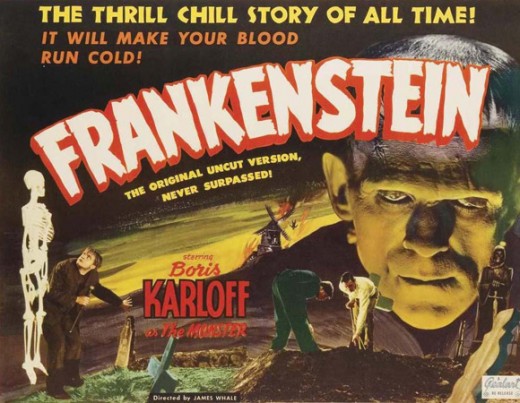
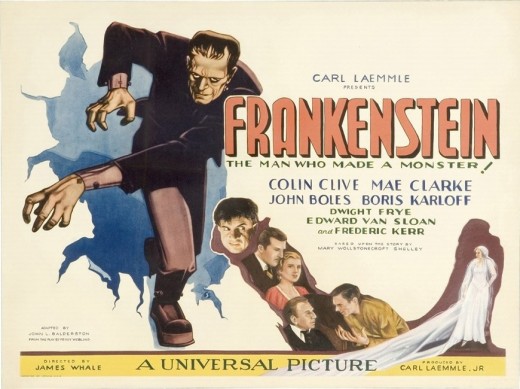
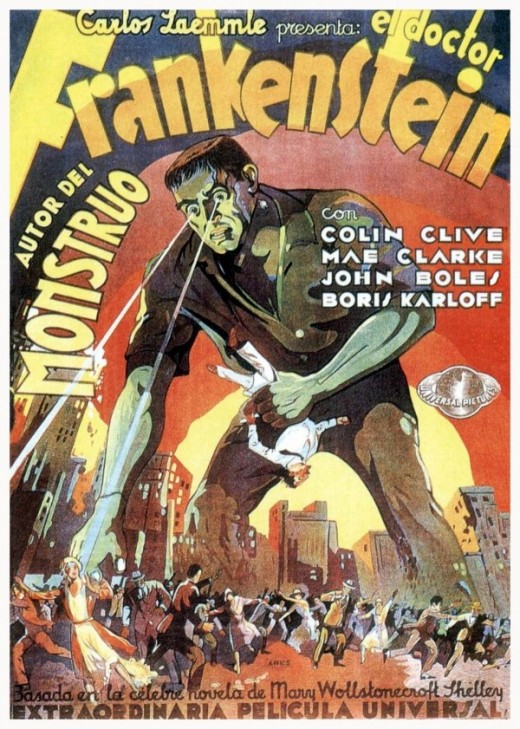
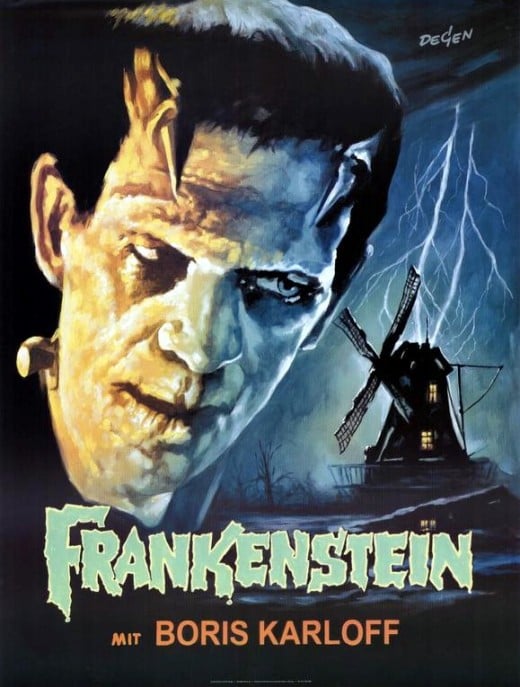
James Whale (1889-1957) moved from England to Hollywood in the late twenties, his first movie was Journey’s End (1930). After the success of that film Universal studios let him choose what he wanted to do next. Tod Browning’s Dracula was a hit earlier in 1931 and so James Whale chose Frankenstein as his next film.
James Whale followed Frankenstein with three more genre classics – The Old Dark House (1932), The Invisible Man (1933) and Bride of Frankenstein (1935). He also directed the classic musical Showboat (1936). Suffering from depression James Whale committed suicide in 1957.
John Carradine (1906-1988) and Bela Lugosi (1882-1956) both turned down the role of the Frankenstein monster, Carradine thought it wasn’t a role for a highly trained actor to play.
Lugosi tested for the monster but complained that there was no dialogue and that he was too good looking to play a monster. Lugosi would eventually play the monster in the 4th sequel Frankenstein Meets the Wolfman (1943 Roy William Neill).
Henry Frankenstein: There's nothing to fear. Look. No blood, no decay. Just a few stitches. And look, here's the final touch. The brain you stole, Fritz. Think of it. The brain of a dead man waiting to live again in a body I made with my own hands, with my own hands. Let's have one final test. Throw the switches.
Kenneth Strickfaden (1896-1984) created the laboratory equipment and electrical effects for the film. They would be used again in the sequel. Mel Brooks Young Frankenstein (1974) thanked Strickfaden for “original Frankenstein laboratory equipment” in its credits.
Make up artist Jack Pierce (1889-1968) created the iconic look of the monster. The Greek-born make up maestro had also worked on Conrad Veidt’s rictus grin for The Man Who Laughs (1928) one of the inspirations for Batman’s nemesis the Joker.
Pierce came up with the idea of giving the monster a flat head which can be opened for access to the brain and electrodes (not bolts) on the neck.
In the novel the monster demands a mate, Victor Frankenstein starts to build a female companion for it, but thinking that this might result in a whole race of monsters plaguing mankind he destroys it. The monster vows revenge and on Victor’s wedding night it kills Elizabeth.
A famous cut scene in Frankenstein now restored was the scene in which the monster, throwing flowers in a lake with a friendly little girl, runs out of flowers and throws the girl into the lake instead thinking she would float like the flowers, the girl drowns.
The shot of the monster picking the little girl and throwing her in was edited out by Universal in 1934 thanks to demands by the new stricter Production Code. The cut actually made the scene a lot nastier because you weren’t sure what the monster did to the little girl.
Another cut which is now reinstated was a line of dialogue from Henry Frankenstein after he brings the monster to life – “In the name of God! Now I know what it feels like to be God!” – It was considered blasphemous in some US States and removed, the splice was covered with a clap of thunder.
Originally Henry Frankenstein died when he was thrown off the windmill by the monster but it was later decided to give the film a happier ending and a new scene was added showing Henry recovering.
Frankenstein was ranked #87 on the American Film Institute's 1998 list of 100 Greatest Movies, #56 on AFI’s 100 Greatest Thrillers and the line “It’s alive! It’s alive!” ranked #49 on the AFI's 100 Greatest Movie Quotes list.
Dracula and Frankenstein were big successes for Universal Studios in 1931 and they ushered in the golden age of horror films which lasted almost two decades.
Universal Studios produced 6 more Frankenstein movies – Bride of Frankenstein (1935 James Whale), Son of Frankenstein (1939 Rowland V. Lee), Ghost of Frankenstein (1942 Erle C. Kenton). Frankenstein Meets the Wolfman (1943 Roy William Neill), House of Frankenstein (1944 Erle C. Kenton) and House of Dracula (1945 Erle C. Kenton).
The comedy Abbott and Costello meet Frankenstein (1948 Charles Barton) was the final nail in the coffin for the Universal Frankenstein series.
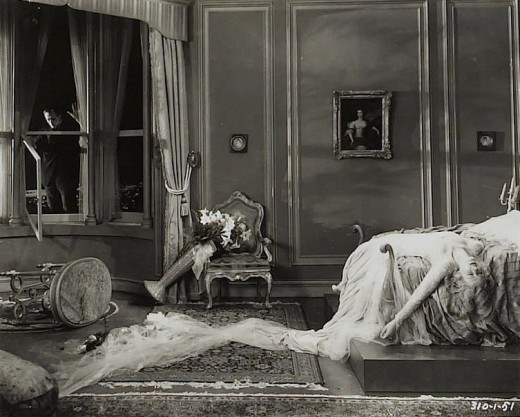
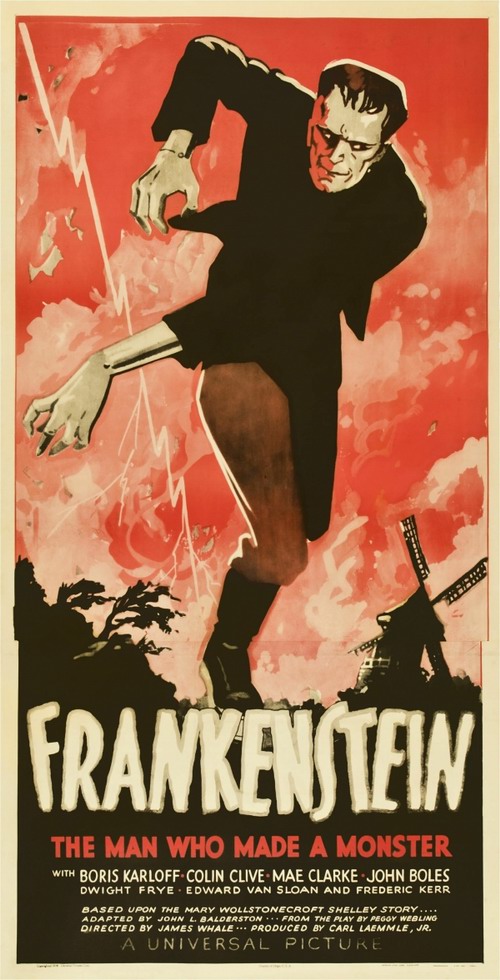
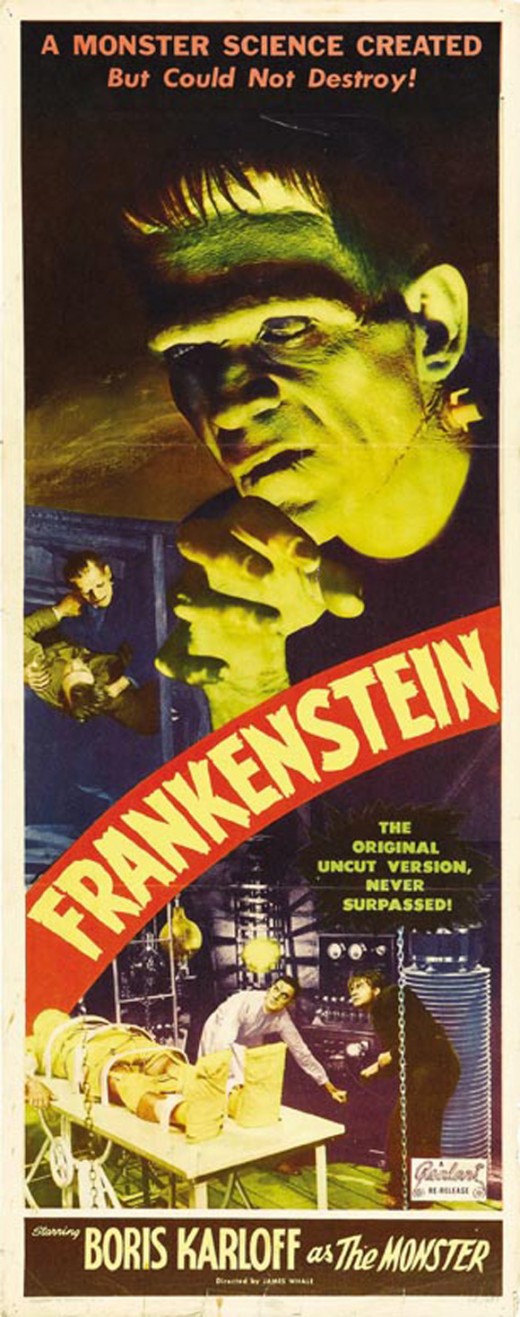
The Critics Wrote –
"Boris Karloff is horrible in his role as the Monster, which merely is another way of saying that he is perfect - so perfect that I hope I never again will see anything like him... If your tastes run to the morbid you will enjoy Frankenstein. If, however, you have a healthy outloook on life you had better stay away from it.” (Hollywood Spectator)
"Of its type, it is very good - if you like thrillers, pure and simple, such as are solely designed to make your flesh creep. Personally, I do not, and even in the well designed and produced goose-flesh sequences of this film. The legend has been very much contorted, but Boris Karloff certainly gives an amazing performance as the monster." (Picturegoer)
“It is naturally a morbid, gruesome affair, but it is something to keep the spectator awake, for during its most spine-chilling periods it exacts attention... No matter what one may say about the melodramatic ideas here, there is no denying that it is far and away the most effective thing of its kind. Beside it Dracula is tame.” (New York Times)
"A seminal film indeed, which at each repeated viewing belies it's age." (Leslie Halliwell)
“Probably the most famous of all horror films, and one of the best.” (Pauline Kael)
"Looks like a "Dracula" plus, touching a new peak in horror plays and handled in production with supreme craftsmanship. Playing is perfectly paced. Colin Clive is a happy choice for the scientist driven by a frenzy for knowledge. He plays it with force, but innocent of ranting.
Boris Karloff enacts the monster and makes a memorable figure of the bizarre figure with its indescribably terrifying face of demoniacal calm, a fascinating acting bit of mesmerism." (Variety)
